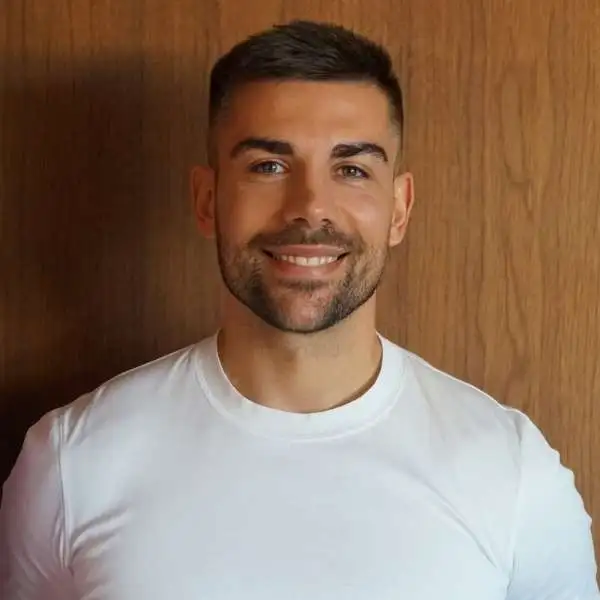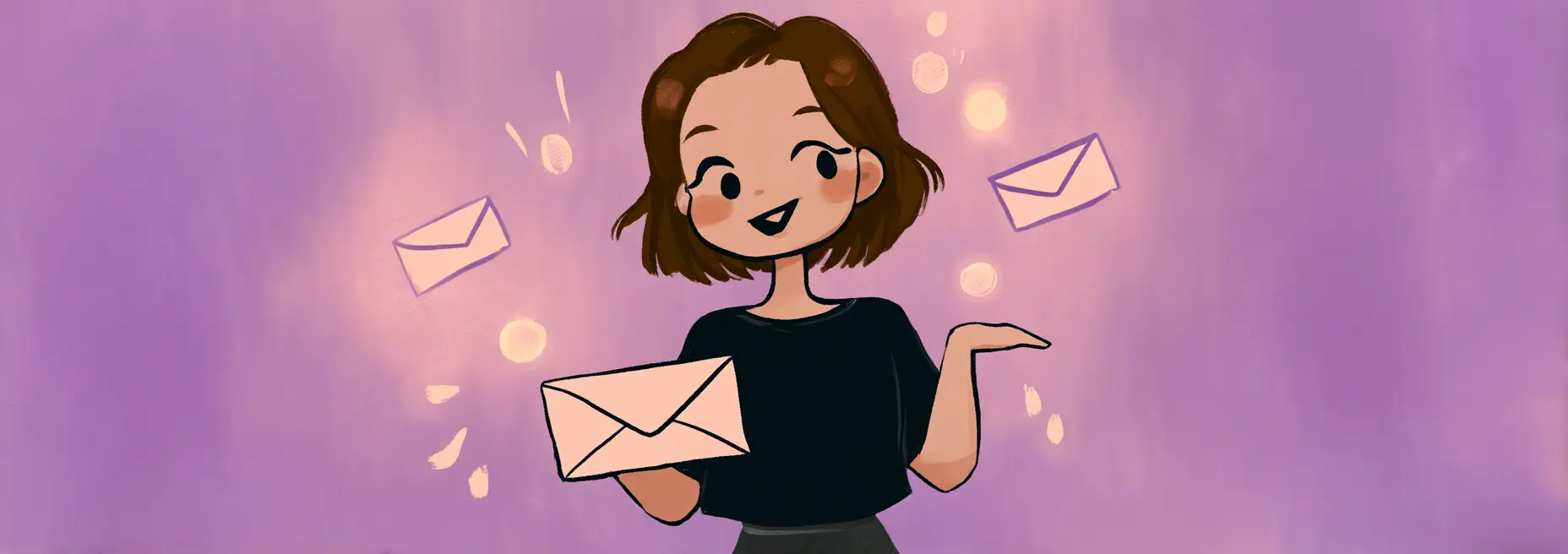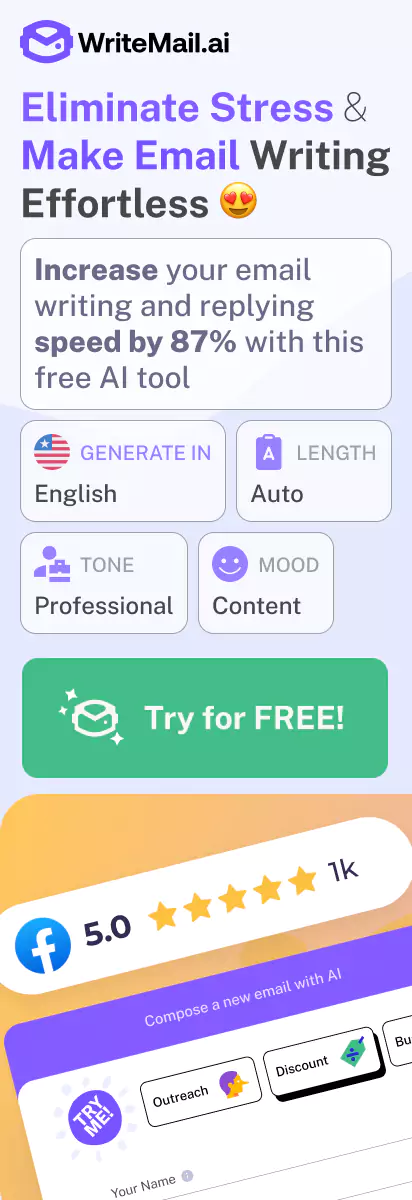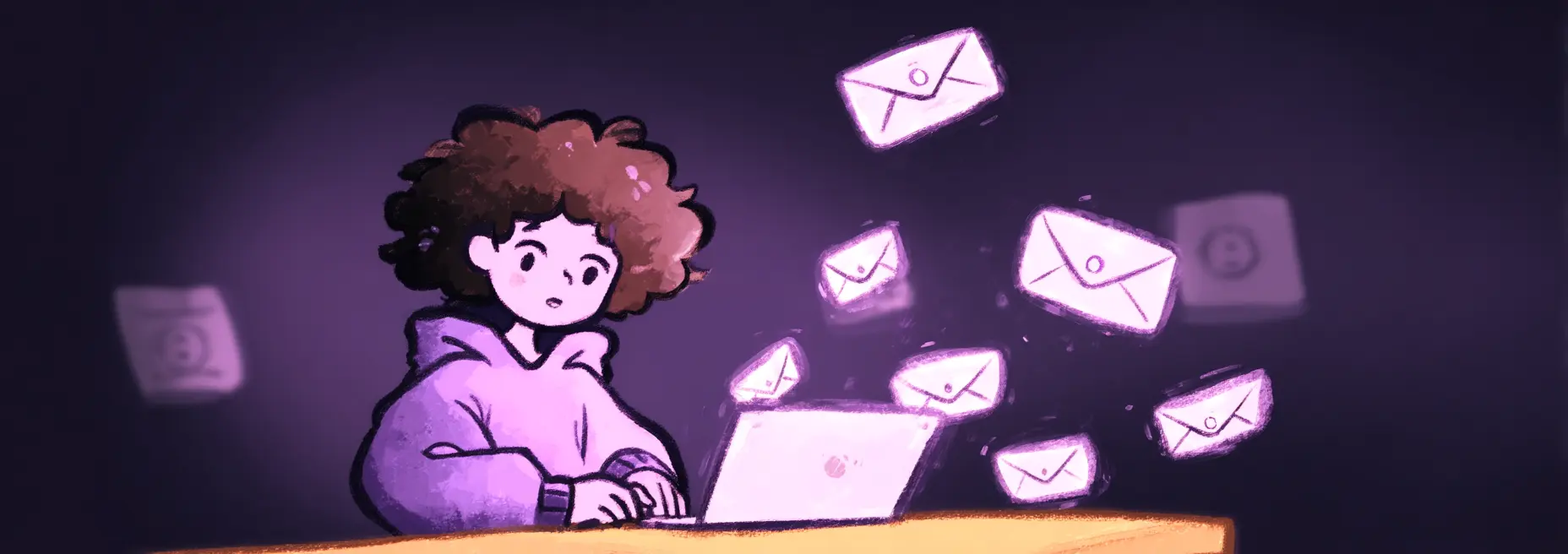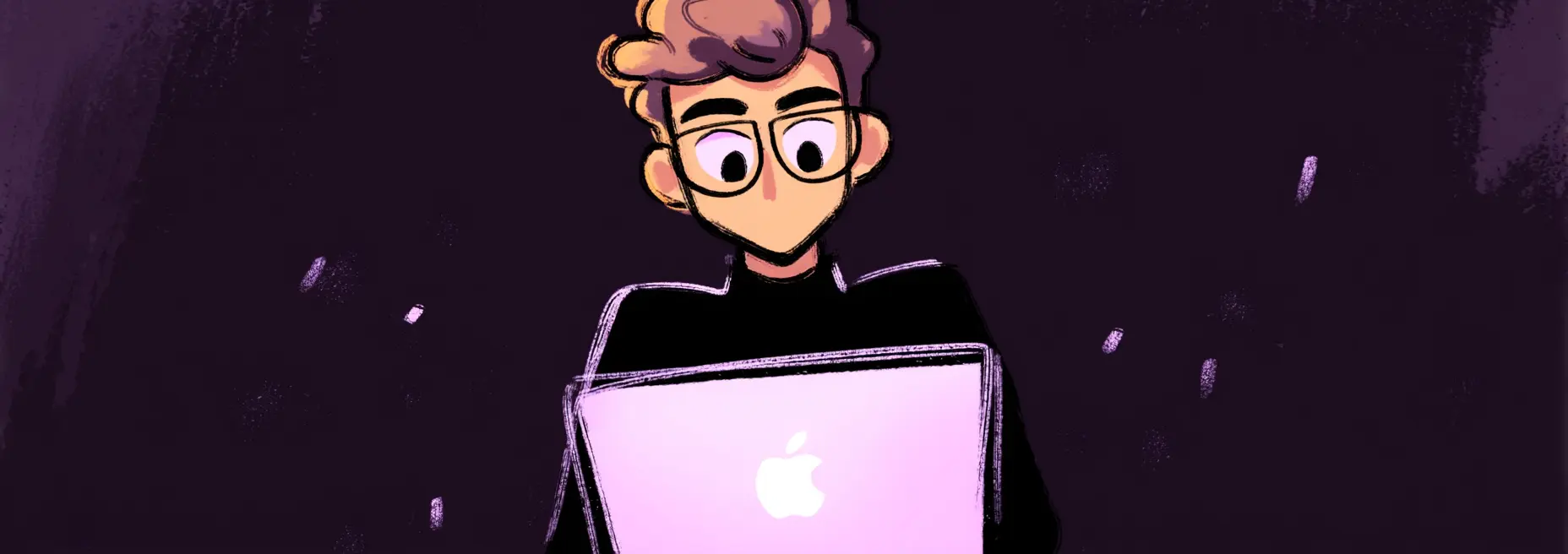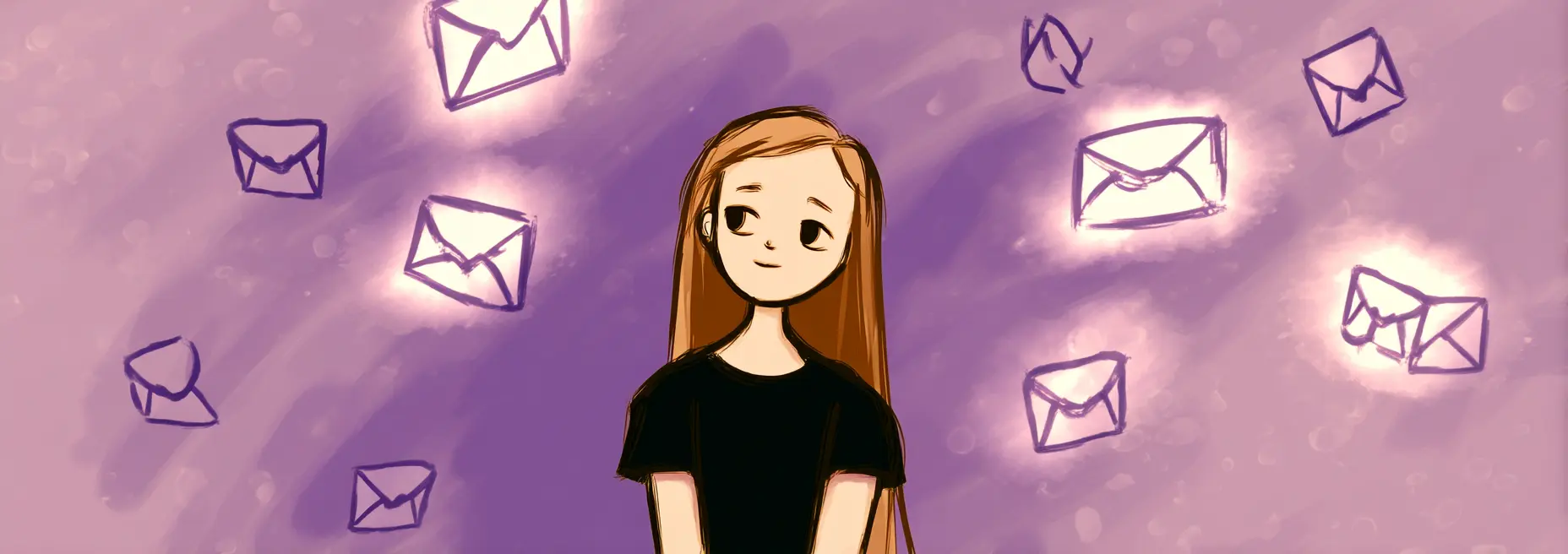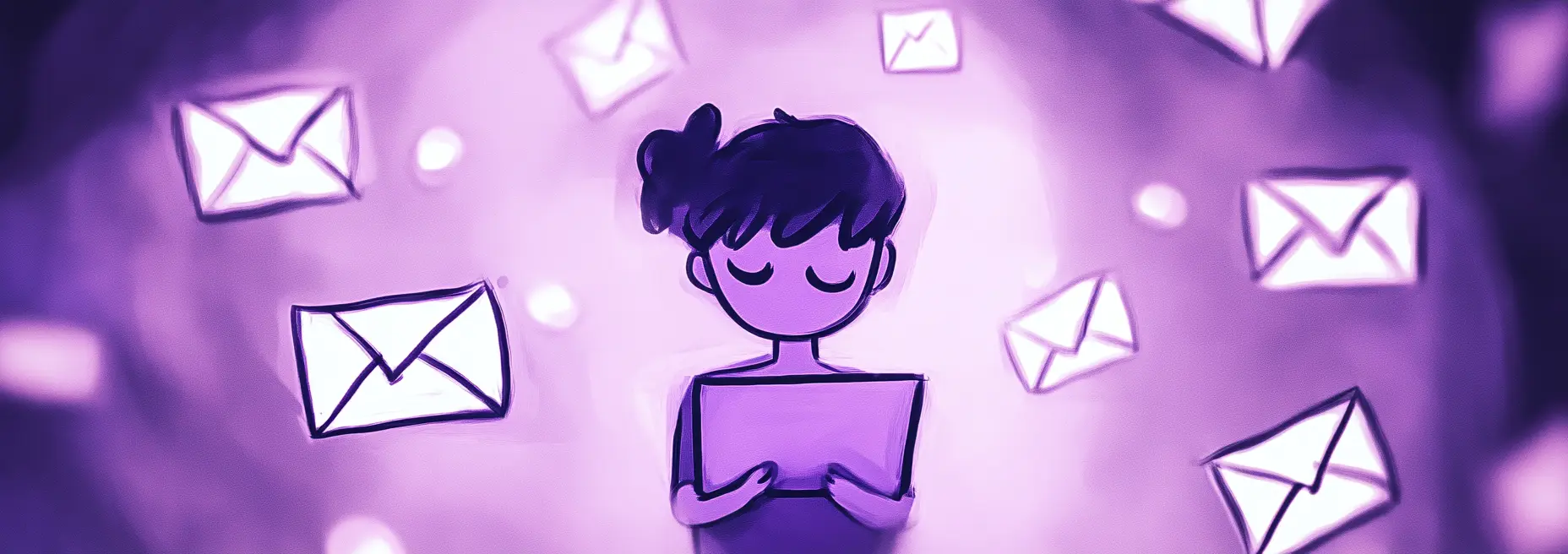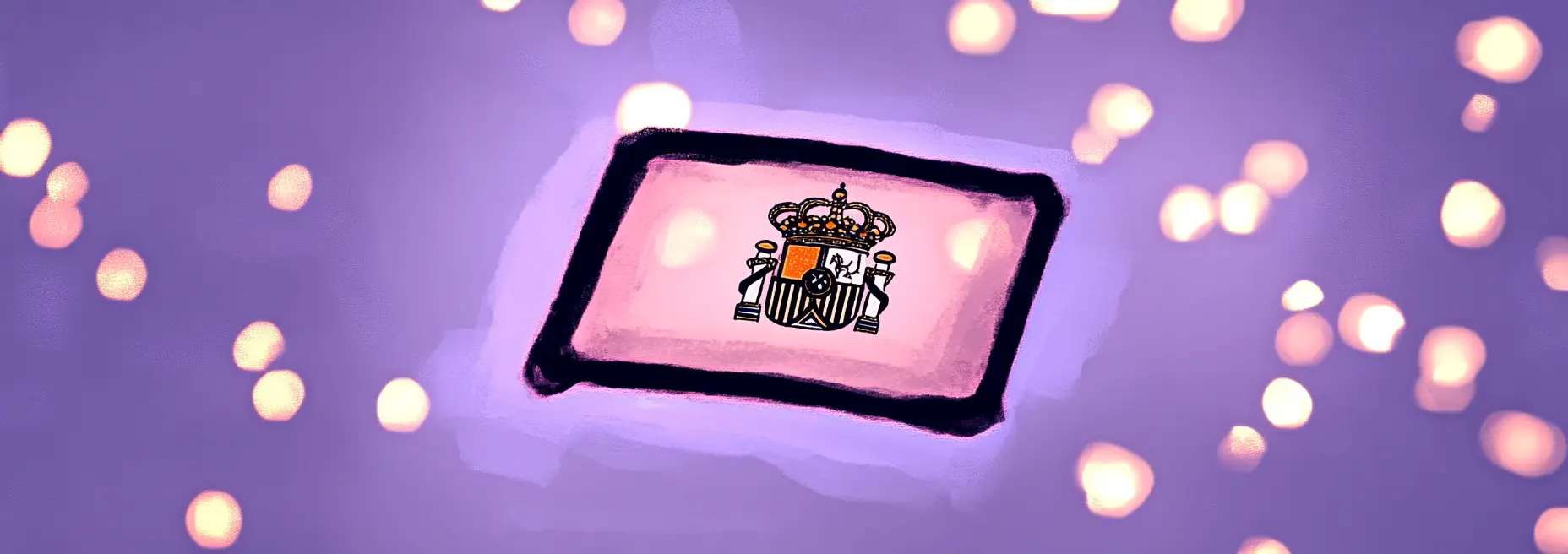You’ve just walked out of what felt like a great interview. Your answers were on point, you built rapport with the interviewer, and you’re excited about the possibility of joining the company. Now what? According to a recent survey by Robert Half, 94% of hiring managers expect some form of follow-up after an interview, yet only 43% of candidates actually send one. This gap represents a golden opportunity for you to stand out.
I’ve spent years coaching job seekers through the interview process, and I can tell you with certainty: a well-crafted follow-up email can be the difference between landing the job and being forgotten in the pile of candidates. When you take the time to follow up properly, you demonstrate professionalism, reinforce your interest, and keep yourself top-of-mind with decision-makers.
Think of your follow-up email as your final interview answer – one last chance to make your case for why you’re the perfect fit. But it needs to be done right. Too many candidates send generic “thank you” notes that miss the opportunity to truly advance their candidacy.
In this guide, I’ll walk you through exactly how to write a follow-up email that does more than just express gratitude – it strategically positions you as the ideal candidate. You’ll learn the perfect timing for sending your email, what specific elements to include that hiring managers are looking for, and how to strike the right tone that’s professional yet personable.
Whether you’re a seasoned professional or searching for your first job, these proven strategies will help you craft follow-up emails that resonate with hiring managers and significantly increase your chances of receiving that coveted job offer. Let’s start by examining the crucial timing of your follow-up…
Crafting the Perfect Subject Line That Gets Your Email Opened
After a promising interview, your follow-up email needs to actually get opened before it can work its magic. In my experience coaching job seekers, I’ve found that the subject line is your first (and sometimes only) chance to capture the hiring manager’s attention in their crowded inbox. Let me show you how to create subject lines that practically demand to be opened.
The Psychology Behind Effective Post-Interview Subject Lines
When you’re crafting your subject line, it helps to understand what motivates hiring managers to open certain emails. Research shows that our brains are wired to respond to specific triggers in email subject lines:
- Recognition and context: Hiring managers are more likely to open emails when they can immediately identify who you are and why you’re writing
- Specificity: Vague subject lines get overlooked, while specific ones that reference the position and interview date create a clear connection
- Brevity: With 60% of emails now being read on mobile devices, you should keep your subject line under 50 characters for optimal visibility
- Personal touch: Including the interviewer’s name or a specific detail from your conversation increases open rates by up to 22%
I recommend approaching your subject line as a mini-headline that gives the recipient just enough information to understand the email’s purpose without giving everything away.
Winning Formulas for Post-Interview Subject Lines
When you’re staring at that empty subject line field, it can be intimidating to know exactly what to write. I’ve developed a few reliable formulas you can adapt to your specific situation:
- Basic formula: Thank You + Position + Your Name
- Specific formula: Thank You + Interviewer’s Name + Date/Time Reference
- Value-add formula: Thank You + Specific Interview Highlight + Brief Value Statement
These structures work because they immediately orient the reader and set proper expectations for the email’s content.
Examples of Effective Subject Lines
Thank you for the Marketing Manager interview, [Interviewer’s Name]
This straightforward approach clearly identifies what position you interviewed for while personalizing with the interviewer’s name. It’s professional and gives immediate context.
Following up on our conversation about content strategy yesterday
This subject line references a specific topic from your interview, showing you were engaged and that this isn’t a generic follow-up. It creates curiosity about what additional thoughts you might be sharing.
Excited about the UX Designer role – Additional portfolio examples
This approach combines enthusiasm with a concrete value-add (additional examples), giving the hiring manager a compelling reason to open your email beyond simple courtesy.
Quick thank you and thoughts on the sales automation challenge
This subject line demonstrates you’re not just sending a generic thank you but addressing a specific challenge discussed during the interview. It suggests you’ve given thought to their business needs after the conversation ended.
Appreciated our team discussion today – Follow-up on international experience
This approach works particularly well after panel interviews, acknowledging the group conversation while focusing on a specific topic that might have needed more elaboration.
Personalizing Your Subject Line Based on Interview Conversations
The most effective subject lines I’ve seen reference something specific from your interview conversation. When you personalize your subject line with details from your discussion, you accomplish several important things:
- You demonstrate that you were actively listening during the interview
- You remind the interviewer of your specific conversation (especially helpful if they’re interviewing multiple candidates)
- You create continuity between the interview and your follow-up
- You stand out from candidates sending generic “Thank you for the interview” emails
To effectively personalize your subject line, reflect on your interview and identify:
- Key projects or challenges mentioned: “Follow-up on the database migration project we discussed”
- Shared interests or connections: “Thank you + that shared interest in sustainable architecture”
- Memorable moments: “Great conversation about team building strategies – Thank you”
- Company news or initiatives: “Excited about your upcoming product launch – Interview follow-up”
I’ve found that personalizing your subject line this way dramatically increases the chances your email will be opened and remembered. In one case, a client of mine referenced a specific business challenge mentioned during her interview, and the hiring manager later told her it was that personalized subject line that made her email stand out among dozens of generic follow-ups.
Remember, your subject line is your first impression in the post-interview phase. When you craft it thoughtfully, you’re already demonstrating the attention to detail and communication skills that employers value. Now let’s look at how to structure the body of your follow-up email for maximum impact.
Structuring Your Follow-Up Email for Maximum Impact
After nailing your interview, how you structure your follow-up email can make the difference between standing out and being forgotten. I’ve found that a well-organized follow-up demonstrates your communication skills and attention to detail — both qualities employers value highly. Let’s break down the essential components that will make your post-interview email impossible to ignore.
The Building Blocks of an Effective Follow-Up
When you craft your follow-up email, you need to include several key elements to make it effective. Think of these as the foundation that supports your candidacy after you’ve left the interview room.
Essential Components:
- Personalized greeting – Address the interviewer by name, using the appropriate title
- Expression of gratitude – Thank them specifically for their time and the conversation
- Specific interview reference – Mention a particular topic or moment from your discussion
- Value reiteration – Briefly remind them why you’re the ideal candidate
- Clear next steps – Express interest in moving forward and reference the timeline discussed
- Professional sign-off – Close with an appropriate signature that includes your contact information
Each of these elements serves a strategic purpose. When you include a specific interview reference, you demonstrate active listening and engagement. When you reiterate your value, you’re refreshing the interviewer’s memory about why they should hire you.
The Science of Email Length
You might be tempted to write a lengthy follow-up showcasing everything you know, but research suggests restraint is better. According to recent studies, hiring managers prefer follow-up emails under 150 words. Why? Because brevity shows respect for their time and demonstrates your ability to communicate efficiently.
When you’re writing your follow-up, aim for 3-4 short paragraphs. This length gives you enough space to include all essential components without overwhelming the reader. Remember, this isn’t the place to introduce your life story—you want to remind them of your conversation and reinforce your fit for the role.
Ideal Follow-Up Email Structure:
- Paragraph 1: Greeting and gratitude (2-3 sentences)
- Paragraph 2: Specific reference to the interview and continued interest (2-3 sentences)
- Paragraph 3: Value reinforcement connecting your skills to their needs (2-3 sentences)
- Paragraph 4: Next steps and professional closing (2-3 sentences)
Example of a Well-Structured Follow-Up Email
Balancing Professionalism and Personality
One of the trickiest aspects of follow-up emails is striking the right tone. You want to come across as professional, but not robotic; enthusiastic, but not desperate. When you write your follow-up, think about the company culture you observed during your interview.
If you’re applying to a traditional corporate environment, lean toward formality with a warm undertone. For startups or creative industries, you can inject a bit more personality while maintaining professionalism. The key is authenticity—let your genuine interest in the position shine through without going overboard.
Tips for Maintaining the Right Tone:
- Mirror the communication style used during your interview
- Use positive language that conveys confidence, not desperation
- Avoid overly casual expressions or slang, even for informal companies
- Express enthusiasm specifically about the role or company, not just getting any job
- Read your email aloud before sending to check how it sounds
I’ve found that personalization is your secret weapon for striking this balance. When you reference specific conversations or details from your interview, you naturally create a more engaging and genuine tone that shows you were fully present and invested in the conversation.
Formatting for Readability
The visual presentation of your email matters almost as much as the content. When recruiters and hiring managers receive dozens of follow-ups, those that are easy to scan will get more attention. You want to make sure your key points stand out even if they’re just skimming.
Formatting Best Practices:
- Use white space effectively with short paragraphs
- Align your text consistently (left alignment is standard for professional emails)
- Choose a professional, readable font (stick with standards like Arial, Calibri, or Times New Roman)
- Avoid creative formatting, colored text, or unusual fonts that might display incorrectly
- Use a clean, simple email signature with your essential contact information
Remember that many hiring managers may read your email on mobile devices. When you keep paragraphs short and your overall message concise, you’re ensuring your follow-up is mobile-friendly, which increases the chances it will be read completely rather than saved for later (and potentially forgotten).
By thoughtfully structuring your follow-up email with these components and considerations, you’ll demonstrate your communication skills while reinforcing the positive impression you made during the interview. In our next section, we’ll explore how to effectively highlight specific interview moments and address any concerns that may have arisen during your conversation.
Demonstrating Your Value and Addressing Interview Highlights
The follow-up email isn’t just a courtesy gesture — it’s your strategic opportunity to reinforce why you’re the ideal candidate. When you thoughtfully reference specific moments from your interview, you show the hiring manager that you were fully engaged and that the conversation mattered to you. Let me show you how to leverage this powerful opportunity to stand out from other candidates.
Techniques for Referencing Specific Interview Topics That Resonated
Your follow-up email should never feel like a generic template. I recommend highlighting 1-2 specific conversation points that genuinely energized you during the interview. This demonstrates your attentiveness and genuine interest in the role.
When referencing these moments, be specific but concise. For example, instead of writing “I enjoyed our conversation about marketing,” try “I was particularly excited about our discussion regarding the upcoming product launch campaign and the creative direction you’re considering.”
Here are some effective approaches you can use:
- Direct reference technique: “Your insights about the challenges facing the customer support team really resonated with me, especially when you mentioned…”
- Connection to experience: “When we discussed the need for streamlining the onboarding process, it reminded me of my experience at [Previous Company] where I implemented a similar solution that resulted in…”
- Shared enthusiasm: “I haven’t stopped thinking about the upcoming AI integration project you mentioned. This aligns perfectly with my background in…”
How to Subtly Address Any Concerns or Missed Opportunities From the Interview
We all have those moments after an interview when we think, “I wish I had said that differently” or “I completely forgot to mention this important experience.” Your follow-up email offers a perfect opportunity to gracefully address these gaps.
If you sense there was a concern about your qualifications, you can tactfully address it without being defensive. For instance, if the interviewer seemed concerned about your experience with a specific software:
- Clarification approach: “After reflecting on our discussion about Salesforce implementation, I wanted to mention that while my hands-on experience is recent, I’ve actually completed three major CRM migrations in the past year…”
- Additional evidence: “Regarding our conversation about team management experience, I realized I didn’t share the results of the cross-functional project I led last quarter, which increased department efficiency by 27%…”
- Knowledge demonstration: “Since our discussion about emerging industry trends, I’ve been researching the specific challenge you mentioned and wanted to share some insights that might be valuable…”
The key is to address these points naturally without drawing undue attention to them as “corrections” or making it obvious you’re compensating for perceived weaknesses.
Strategies for Reinforcing Your Qualifications by Connecting Them to Company Needs
Now that you’ve had the interview, you understand the role’s challenges and priorities better than when you applied. Use this newfound insight to create powerful connections between what they need and what you offer.
I recommend following this simple formula:
- Identify a specific company need or challenge mentioned during the interview
- Connect it directly to your relevant experience or skill
- Briefly describe a tangible outcome you’ve achieved that demonstrates your ability
This approach transforms your follow-up from a mere courtesy into compelling evidence of your value. For example:
- Problem-solution format: “Your team’s challenge with scaling content production while maintaining quality resonates with me. At [Previous Company], I implemented a modular content strategy that increased output by 45% while improving engagement metrics by 23%.”
- Future-focused approach: “I’m excited about your plans to expand into the European market next quarter. My experience navigating regulatory compliance in the EU would allow me to help streamline this transition, as I did when leading my previous company’s successful GDPR implementation.”
Remember that your goal is to make the hiring manager’s decision easier by clearly connecting the dots between their needs and your capabilities.
Example: Referencing Interview Highlights and Adding Value
Example: Value-Adding Follow-Up Email
This example works effectively because:
- It immediately references a specific, memorable topic from the interview
- It adds genuine value by offering a potential solution to a real business challenge
- It subtly addresses a potential concern (experience with different platforms)
- It reinforces the candidate’s qualifications by connecting them directly to the company’s stated goals
- It demonstrates initiative and proactive problem-solving without being presumptuous
When you craft your follow-up this way, you’re not just reminding them of your interview—you’re continuing to demonstrate the exact value you’ll bring to their organization from day one. This approach transforms your follow-up from a simple courtesy into a compelling reason to move you forward in the hiring process.
Customizing Your Approach for Different Interview Scenarios
Just as you wouldn’t wear the same outfit to every type of event, your follow-up emails shouldn’t follow a one-size-fits-all approach. Different interview formats and stakeholders require thoughtful customization to maximize your impact. Let me show you how to tailor your approach for various scenarios you’ll encounter in your job search.
Adapting to Different Interview Formats
The type of interview you’ve just completed should directly influence your follow-up strategy. I’ve found that acknowledging the specific interview format shows attention to detail and helps personalize your message.
Phone Interviews
- Reference the convenience of the conversation while acknowledging its limitations
- Reiterate key points clearly since visual cues were absent
- Express enthusiasm about potentially meeting in person for the next round
- Keep your message slightly more concise than other follow-ups
Video Interviews
- Acknowledge any technical challenges that occurred (if applicable) with grace
- Reference visual elements or shared screens from the interview
- Thank the interviewer for accommodating the virtual format
- Mention your comfort with remote collaboration tools if the role involves remote work
In-Person Interviews
- Express appreciation for the office tour or meeting team members
- Reference specific elements of the company culture you observed
- Mention any materials or work samples you left with them
- Thank them for accommodating your visit to their location
Panel Interviews
- Address all interviewers collectively in one email (cc’ing everyone)
- Acknowledge specific questions or topics raised by different panel members
- Convey your ability to collaborate with cross-functional teams
- Express appreciation for the comprehensive evaluation process
Targeting Different Stakeholders
Different people involved in your interview process have different priorities and perspectives. I recommend customizing your follow-up message based on who you’re addressing to demonstrate your understanding of their specific concerns.
HR/Recruiters
- Focus on process-oriented details and next steps
- Emphasize your fit with company culture and values
- Maintain slightly more formal language
- Ask about timeline expectations for the hiring process
Hiring Managers
- Connect your skills directly to the department’s goals and challenges
- Reference specific projects discussed during the interview
- Demonstrate your understanding of their team’s priorities
- Show how you can add immediate value to their operations
Potential Teammates
- Focus on collaborative aspects and team integration
- Use a slightly more conversational tone
- Express enthusiasm about potentially working together
- Reference shared interests or connections discovered during the interview
Executive Stakeholders
- Demonstrate strategic thinking and big-picture understanding
- Keep your message concise and high-level
- Reference company vision or long-term goals discussed
- Show appreciation for their time, acknowledging their busy schedule
Example: Panel Interview Follow-Up
Example: Follow-Up After a Phone Screening with HR
Adapting to Company Culture
One crucial aspect of customization is aligning your follow-up with the company’s culture. I’ve found that this subtle adjustment can significantly impact how your message is received.
For formal corporate environments (like financial institutions or established corporations), maintain professional language, use proper titles, and focus on structured achievements and processes. In startup or creative environments, you can adopt a more conversational tone, reference innovative ideas, and show your personality more freely.
During your interview, look for cultural cues: How did people dress? What language did they use? How formal was the interaction? These observations should guide your follow-up tone.
Using AI Assistance for Customization
Crafting multiple customized follow-ups can be challenging, especially after a series of interviews with different stakeholders. This is where WriteMail.ai can be particularly helpful. You can input the specific interview context, stakeholder role, and company culture, and the AI will generate appropriately tailored follow-up emails that maintain the right tone and emphasis.
When using AI assistance, I recommend:
- Providing specific details about your interview (who, what format, key topics discussed)
- Specifying the company culture (formal, casual, creative, etc.)
- Reviewing and personalizing the generated email with your authentic voice
- Adding specific details that only you would know from the interview
Remember, the goal of customization isn’t to create completely different personas but to emphasize the aspects of your professional self that align best with each specific context. By thoughtfully adjusting your follow-up approach based on interview type, stakeholder, and company culture, you dramatically increase your chances of making a lasting positive impression that leads to a job offer.
Common Follow-Up Email Mistakes and How to Avoid Them
Even with the best intentions, your follow-up email can sometimes miss the mark or even harm your chances of getting hired. I’ve reviewed hundreds of post-interview communications, and I’ve noticed patterns in what separates effective follow-ups from those that fall flat. Let me walk you through the most common pitfalls and how you can sidestep them to keep your candidacy strong.
Critical Errors That Can Cost You the Job
When you’re eager to make a good impression, it’s easy to overlook details that might undermine your professionalism. Here are the mistakes I see candidates make most frequently:
- Spelling and grammar errors: Nothing diminishes your professionalism faster than careless mistakes. Always proofread carefully—these errors suggest a lack of attention to detail that employers rarely overlook.
- Generic, template-style content: When you send a follow-up that could apply to any company or position, you signal to employers that you’re not truly invested in this specific opportunity. Hiring managers can spot cookie-cutter emails immediately.
- Overly aggressive or demanding tone: Expressing confidence is positive, but crossing into presumptuous territory (“I look forward to discussing my start date”) can alienate potential employers. Similarly, demanding a timeline can come across as entitled rather than enthusiastic.
- Information overload: Including too much information or writing paragraphs that are too long can overwhelm busy hiring managers. Remember, brevity shows respect for their time.
- Missing the personalization opportunity: If you don’t reference specific conversations or points from your interview, you miss a crucial chance to reinforce your connection with the interviewer.
I recommend reading your follow-up aloud before sending it. This simple practice helps you catch awkward phrasing and tone issues that might not be apparent when reading silently.
The Right Approach to Following Up After No Response
When your initial follow-up goes unanswered, it’s natural to feel anxious. However, how you handle this silence can significantly impact your candidacy.
Timing is everything when sending subsequent follow-ups:
- Wait at least 5-7 business days after your initial follow-up before sending another message
- If they provided a timeline (e.g., “We’ll decide by next Friday”), wait until after that date has passed
- Limit yourself to a maximum of 2-3 follow-ups in total—persistence can demonstrate interest, but there’s a fine line between persistent and pestering
Your escalation strategy should maintain professionalism while gently requesting information:
- Keep each subsequent follow-up brief and courteous
- Reference your continued interest rather than your frustration
- Provide a diplomatic “out” for the employer (acknowledge they’re busy)
- Consider switching communication channels after two email attempts (like connecting on LinkedIn or a brief phone call)
Remember that hiring processes often take longer than anticipated. When you maintain patience and professionalism in your follow-ups, you demonstrate valuable workplace qualities that hiring managers appreciate.
Example: Problematic vs. Improved Follow-Up
Poor Follow-Up Example:
Improved Follow-Up Example:
Why the second example works better:
- Uses a specific subject line that includes the position and name
- Addresses the recipient by name with a proper salutation
- References specific conversation points from the interview
- Provides additional value (relevant case study)
- Maintains a professional tone while showing genuine interest
- Avoids pressuring language or mentions of other offers
- Includes complete contact information
Using AI Tools to Perfect Your Tone
Even when you’re careful, it can be difficult to objectively assess how your email might be perceived. This is where technology can help supplement your judgment. WriteMail.ai‘s tone analyzer feature can identify potential issues in your follow-up emails that you might miss.
When you’re crafting your follow-up, AI tools can help you detect:
- Overly demanding language that might put off employers
- Desperate-sounding phrases that undermine your professional positioning
- Passive-aggressive undertones you may not intend
- Excessive formality or informality inappropriate for the company culture
I’ve found these tools particularly helpful when you’re feeling anxious about a job opportunity you really want. When emotions are high, it’s easy for tone issues to creep into your writing without your awareness.
The key is to use AI assistance as a supplement to—not a replacement for—your own judgment. After all, you’re the one who participated in the interview and understands the personal dynamic you established with the interviewer.
By avoiding these common mistakes and approaching your follow-ups with strategic care, you’ll stand out positively from other candidates. Remember, your follow-up email is another opportunity to demonstrate the professional communication skills employers value in every role.
7. Advanced Strategies and The Second Follow-Up
Once you’ve sent your initial post-interview thank you email, you might find yourself waiting for a response. The hiring process can sometimes extend longer than anticipated, and knowing how to navigate this waiting period effectively can set you apart from other candidates. Let’s explore how you can maintain momentum in your communication without appearing desperate or pushy.
The Art of the Second Follow-Up
Timing is everything when it comes to second follow-up emails. I recommend waiting at least 7-10 days after your initial follow-up before sending another message. This gives the hiring team adequate time to progress in their decision-making process while showing that you’re respectfully persistent about the opportunity.
When you do send that second email, your approach should be thoughtful and add value rather than simply asking for an update. The goal is to demonstrate your continued interest while respecting the employer’s timeline.
Key strategies for effective second follow-ups:
- Reference your previous communications and interview date
- Reaffirm your interest in the position and organization
- Provide a compelling reason for your follow-up
- Include a subtle call to action that invites response
- Maintain a tone that’s professional yet warm
Adding Value in Subsequent Communications
The most effective second follow-ups do more than just ask for updates—they provide additional value that reinforces your candidacy. Think of this as an opportunity to strengthen your position rather than simply checking in.
Ways to add value in your follow-up:
- Share relevant content – Send an article, research paper, or industry news that relates to something discussed in your interview
- Offer a fresh insight – Provide a thoughtful observation about an industry trend or challenge the company is facing
- Showcase continued learning – Mention a relevant course or certification you’ve started since the interview
- Present a mini-proposal – Share a brief idea that demonstrates how you’d approach a problem mentioned during your conversation
This approach positions you as a candidate who’s already thinking like a team member and reinforces the unique value you bring to the organization.
Inquiring About the Hiring Timeline
One of the trickiest aspects of follow-up communication is asking about timing without appearing impatient. I’ve found that framing your inquiry in terms of your enthusiasm for the role, rather than your need for an answer, strikes the right balance.
When you ask about the timeline, be transparent if you have other opportunities progressing, but avoid creating false urgency. If you genuinely have another offer under consideration, it’s appropriate to mention this professionally—this information might help accelerate their decision process if they’re interested in you.
Effective timeline inquiry approaches:
- “I’m excited about this opportunity and wondering if you could share an updated timeline for the decision process.”
- “As I’m planning my professional schedule, could you provide any insight into when you expect to move forward with the next steps?”
- “I wanted to check if there’s any additional information I could provide to support your team’s decision-making process.”
Example of a Second Follow-Up Email
When to Stop Following Up
While persistence demonstrates interest, there’s a fine line between being appropriately persistent and becoming a nuisance. As a general rule, I suggest limiting yourself to two or three follow-up emails after the initial thank-you note. If you still haven’t received a response after your third attempt, it’s usually best to gracefully step back.
In my experience, when companies are genuinely interested, they rarely leave candidates completely in the dark. If you’re not hearing back despite multiple professional follow-ups, it might be time to focus your energy on other opportunities while remaining open should they eventually reach out.
Leaving the Door Open
If you’ve reached your follow-up limit without response, consider sending one final message that leaves the door open for future opportunities. Express gratitude for the interview experience, reiterate your interest in the company (not just the specific role), and mention that you’d welcome future opportunities to connect.
This approach demonstrates professionalism and builds a bridge for potential future interactions, even if this particular opportunity doesn’t work out. Remember that hiring managers often remember candidates who handle communication gracefully, which could benefit you down the road.
The post-interview communication process is as much about demonstrating your professional communication skills as it is about securing the position. By mastering these advanced follow-up strategies, you’ll not only increase your chances of landing the current job but also build valuable connections for your career journey.
Conclusion: Turning Your Follow-Up Email Into a Job-Winning Tool
Throughout this article, I’ve shared strategies that can transform your post-interview follow-up from a mere courtesy into a powerful tool that could help secure your dream job. When you implement these techniques consistently, you position yourself as a thoughtful, professional candidate who understands the importance of effective communication.
Remember that your follow-up email is often your final opportunity to make an impression before the hiring decision. I recommend that you treat it with the same care and preparation you devoted to the interview itself. The 24-hour window after your interview is particularly crucial—use it wisely to craft a message that reinforces your value while demonstrating your genuine interest in the position.
Key Takeaways to Remember
- Timing matters—aim to send your follow-up within 24 hours of your interview
- Craft a compelling subject line that ensures your email gets opened
- Structure your email with clear sections: appreciation, value reinforcement, and next steps
- Reference specific interview moments to show you were engaged and attentive
- Customize your approach based on the interview type and your audience
- Avoid common mistakes like typos, generic content, or overly aggressive follow-up
- Plan your second follow-up strategically if you don’t receive a response
My final tip — one that has helped countless professionals secure positions—is to maintain authenticity in your communication. While following these guidelines is important, you should let your genuine enthusiasm and personality shine through. Hiring managers can sense when you’re truly excited about an opportunity versus when you’re simply going through the motions.
If you find yourself struggling with crafting these crucial emails, tools like WriteMail.ai can help you generate well-structured follow-ups that maintain the perfect professional tone while incorporating your unique interview experience.
Now it’s time for you to put these strategies into action. Your next interview follow-up email could be the difference between a job offer and a rejection letter. I encourage you to review these tips before your next interview and prepare a follow-up template in advance that you can quickly customize afterward.
Remember, effective email communication is a skill that extends far beyond the hiring process—it’s an asset that will serve you throughout your entire career. Master it now, and you’ll reap the benefits for years to come.
Good luck with your job search! I’m confident that with these strategies, you’ll create follow-up emails that get you noticed—and hired.
